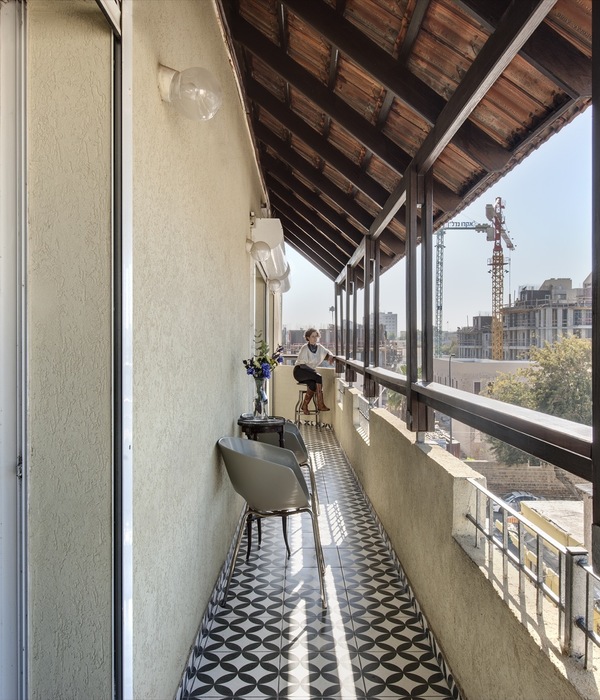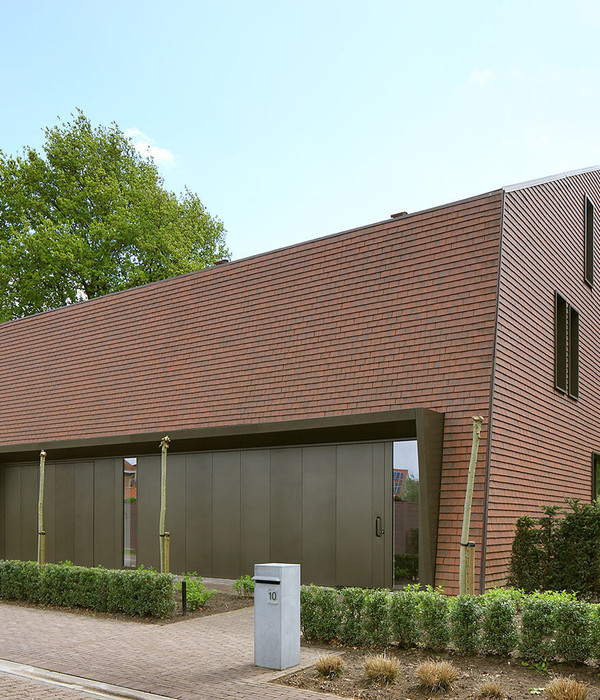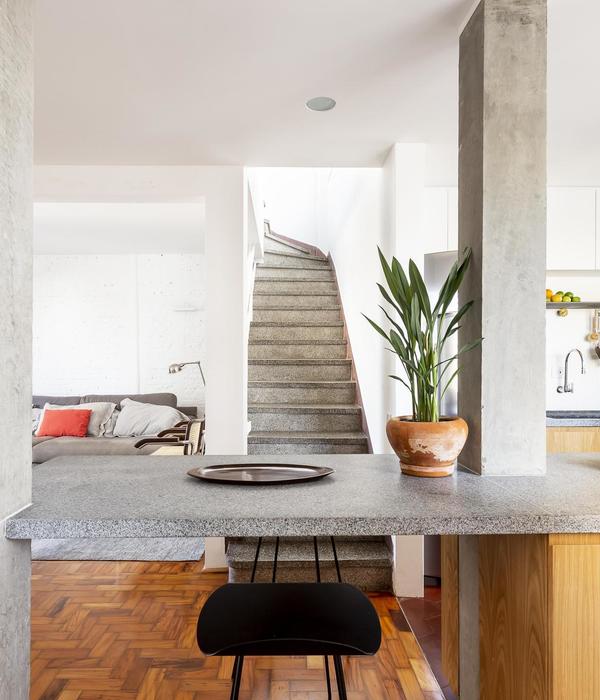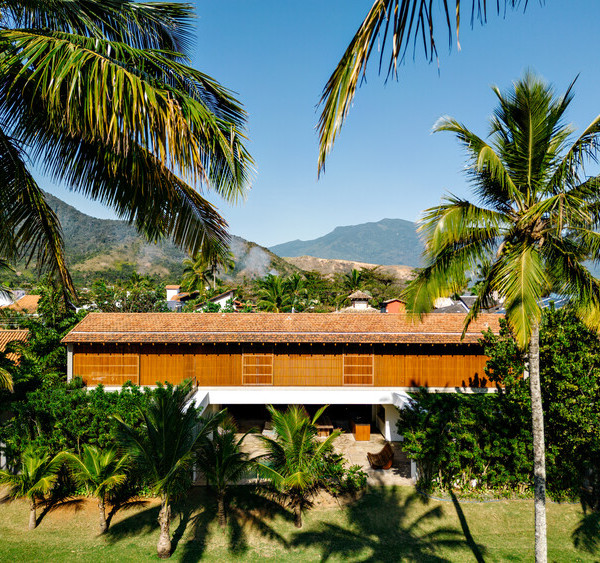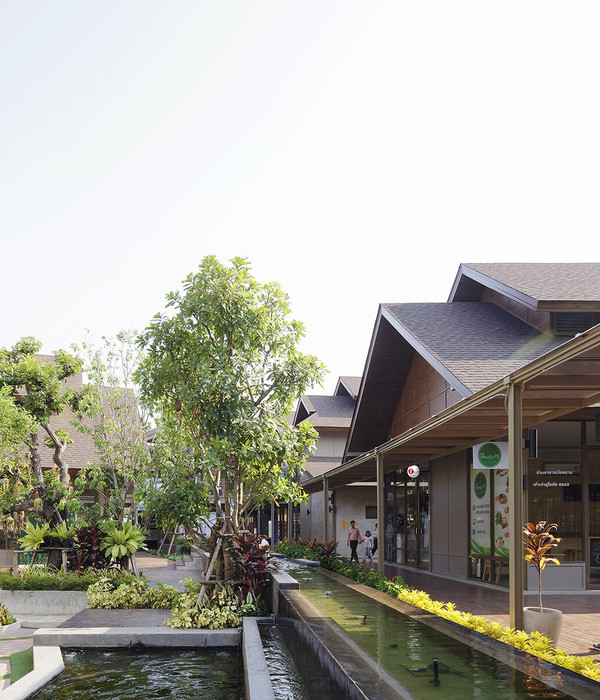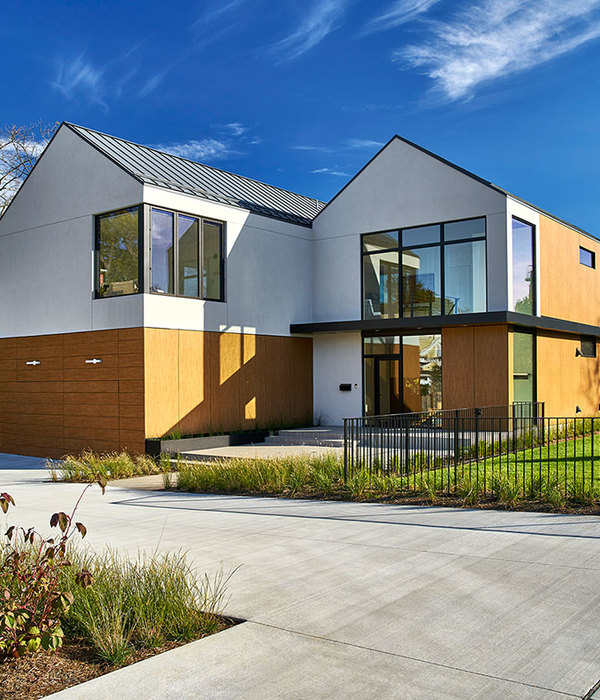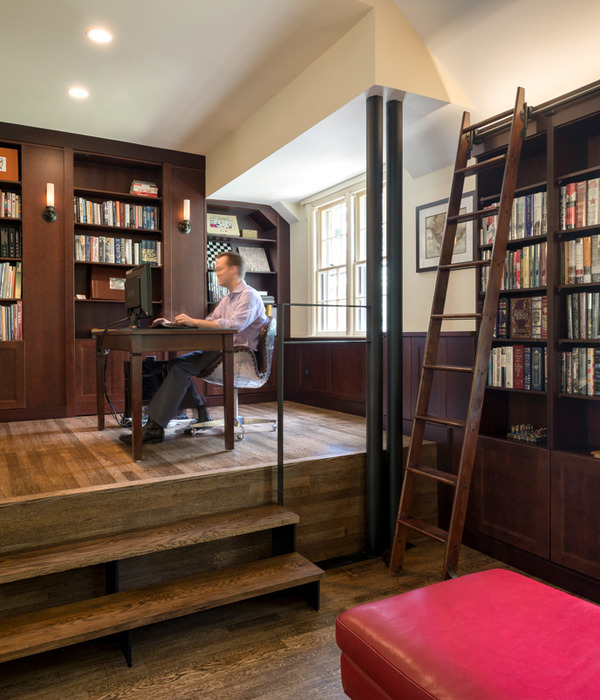2016年,洛桑鸟类俱乐部COL在Préverenges购得面向鸟岛的小木屋,该地是2001年围湖形成的人工生物区,如今被列为官方自然保护区。这里与流入日内瓦湖的Venoge河的天然河口相连,由于处在莱茵河谷轴线上独特的地理位置,该地也成为瑞士水鸟迁徙的关键停歇地之一。来自非洲的鸟类在飞往北极冻原的夏季栖息地前会在此停留。新鸟岛屋位于岛屿对面,位置绝佳,它旨在提高公众和该地区学童对自然保护、气候和人类活动对水鸟迁徙停歇地的破坏等问题的认识。
In 2016, the Lausanne ornithology club (COL: Cercle Ornithologique de Lausanne) acquired a small cabin facing Île aux Oiseaux (“Bird Island”) at Préverenges, an artificial biotope reclaimed from the lake in 2001 and now classified as an official nature reserve. Its location is connected to the natural estuary of the Venoge, a river that flows into Lake Geneva. This is one of the main stopping places for migratory waders in Switzerland, primarily due to its unique geographic situation in the axis of the Rhône valley. Birds arriving from Africa stop here before moving on to their distant summer quarters in the Arctic tundra. Ideally located opposite the island, the new Maison de l’Île aux Oiseaux (bird island house) aims to raise awareness among the public and the region’s schoolchildren of issues around nature protection, the climate and the impact of human activities on the loss of stopover sites for migratory waders.
▼项目概览,general view of the project © Matthieu Gafsou
▼区位鸟瞰,aerial view of the site © Lionel Mamaury
鸟岛屋灵感来自鸟类世界优雅的树枝、鸟巢和羽毛。其结构由坚固的竖直木板组装而成,它们弯曲成尖拱元素、构成网状结构,象征着鸟巢的精密。支撑屋顶的尖拱板环绕建筑,装饰了内部天花。室内为游客提供基本而温馨的空间,整体覆盖浅色天然松木,与建筑外部的深色构架形成鲜明的对比。屋顶庞大,带有大屋檐,它由多层薄交叉层积材组成,并覆有黑色镀锌层。薄木层的叠加使通风开放的屋顶结构变得轻盈,营造出悬浮和运动的效果,屋顶的弯折方式也增强了这种效果。轻巧的屋顶形式还经过面积设计,从而避开周围古老的苏格兰松树。就这样,小屋巧妙地融入环境,不会对原有的生态系统造成干扰。
The architecture of the bird island house draws inspiration from the elegance of the bird world (twig, nest, feather). Its structure is composed of solid vertical boards, assembled without glue, that have been bent to form a lacework structure of ogival elements suggesting the tension and delicacy of a nest. The ogival boards that support the roof run across the building, ornamenting the internal ceiling. Inside, visitors find a basic, warm space, covered with a light-coloured natural pine wood that contrasts with the darker framework of the building. The roof is generously sized, with large eaves. It consists of layers of wood formed of thin cross-laminated panels and covered with black zinc cladding. The superposition of thin layers of wood lightens the airy, open-to-view roof structure, creating an impression of suspension and movement – an effect accentuated by the way the roof shape curves. The light form of the roof also has a footprint designed so that it slips between the very old Scots pine trees standing on this plot of land. In this way the pavilion blends very sensitively with its surroundings, causing no disturbance to the pre-existing ecosystem.
▼项目外观,灵感来自树枝、鸟巢和羽毛,the appearance inspired by twig, nest and feather © Matthieu Gafsou
小屋通过金属细柱从地面升起,如同鸟儿般立在湖边,记录着湖边的情况、水、时间以及旅途。闪光的金色支柱保护鸟岛屋不受恶劣天气的影响。鸟岛屋的主入口经由弯曲的长坡道,将小屋延伸至湖边的人行道,伸向岛对面的游客。坡道的竖直木板支撑在金属支柱上,如同木制码头,其曲线造型和迥异的颜色使人想起水鸟的尾巴。高出地面的木材和湿土通过混凝土基座过渡。
Standing by the lakeside like a bird, the pavilion is raised above the ground on delicate metal feet in a way that references its lakeside situation, water, time and travel. The gilded, shining feet protect the Maison de l’Île from bad weather. The main entrance to the house is via a large, curved ramp that extends the pavilion out towards the lakeside walkway, reaching out to visitors who are opposite the island. Made up of many vertical boards and raised on metal feet like a wooden pier, its curved shape and contrasting shades are reminiscent of a wader’s tail. A concrete base defines the transition between the damp earth and the wood raised above ground level.
▼背立面,建筑高于地面,rear facade, the building is raised above the ground © Matthieu Gafsou
鸟岛屋的平面布置很简洁,核心功能块将单层房间划分成两个独立而开放的部分。功能块包括厨房和厕所,如同木制的屋中屋。它正对大圆窗,可以从室外看到。两组长木架沿着侧墙布置,与入口同向,涵盖了鸟岛屋的教育展示功能。公众由湖边坡道进入小屋,受到宽屋顶悬挑的保护。背立面设有次入口和小圆窗,与正立面呼应。屋顶外部专门设计了狭小的水平缝隙,用作内部蝙蝠栖息箱的入口。通过这种方式,建筑提供了不同物种栖身和繁殖的家园。
The plan of the new pavilion is simple, comprising a single room divided by a central functional hub which organises the space into two distinct but open sections. This functional box, like a wooden house-within-a-house, contains the kitchen and the toilets. It is aligned with the large round window and can be seen from the exterior. Two long wooden shelf units run along the side walls of the building, aligned with the direction of entrance, contain the Maison de l’Île’s educational displays. The public enters via the lakeside ramp, protected by the wide roof overhang. On the rear façade a service entrance and a smaller round window echo the main façade. The roof structure also has specially-designed small horizontal slits on the outside – the entrances to bat roosting boxes, incorporated within the roof: in this way the building itself is also providing homes where different species can take shelter and reproduce.
▼透过大圆窗望向湖岸,view to the lakeside through the large round window © Matthieu Gafsou
▼室内概览,overall view of the interior © Matthieu Gafsou
▼屋中屋,the house-within-a-house © Matthieu Gafsou
▼侧面展墙,the side wall for exhibition © Matthieu Gafsou
在岸边,大圆窗引人注目,将游客目光引向鸟岛屋。它如同反映周围世界的镜头,使人联想起相机暗箱或者巢箱。玻璃“眼睛”赋予这个新的公共设施强烈的特征和迷人的外表。夜幕降临,圆窗亮了起来,展露出小屋的内部。鸟岛和小屋形成连贯的整体,在完美的对话中相得益彰。深色立面和其结构形成对比,使人联想起鸟类羽毛的色调,同时完美地与湖岸和苏格兰松树旁既有木屋的色调相协调。
The large round window is an eye-catching feature on the riverside walk, drawing visitors’ gaze towards the bird island house. It is like a lens reflecting the world around it – reminiscent of a camera obscura or a nesting box. This glass “eye” gives this new public facility a strong identity and an attractive presence. As night falls the round window lights up, revealing the pavilion’s interior. The bird island and the bird island house form a coherent ensemble, complementing each other in a perfect dialogue. The dark shade of the façade, contrasting with its structure, evokes the subtle shades of the birds’ plumage while harmonizing perfectly with the tonalities of the little chalets already existing along the lakeside and the Scots pines.
▼夜景,night view © Matthieu Gafsou
结构的钳形构件选用银枞木制成,银枞是当地物种,具有很好的力学性能和优异的耐户外条件。建筑的网状结构是通过叠加曲面尖拱板、用下部檩条夹住屋顶檩条形成的。尖拱曲面则通过在木制模板上组装三块15毫米的薄板制成。设计师采用白蜡木构件而非粘接剂来保持尖拱形状,将其插入预先留有钻孔和间距的孔洞中,定形并加固。裸露的白蜡木横档不仅使立面尖拱具有稳定性,而且为鸟类提供了临时的栖息场所。与木板齐平的金属钉将所有钳形构件连接起来,构成小屋的网状结构。自稳定构架确保了横向稳定性,垂直构件的几何形状和钳形布局确保了纵向稳定性。构架的不同部分大小不一,但厚度相同。
Silver fir was the wood chosen to make the structure’s pincer-shaped elements. This local species offers very good mechanical qualities and excellent resistance to outdoor conditions. The building’s lacework structure is formed by adding together the curved ogive-shaped boards, pinching the crossbeam of each lower board together with the corresponding crossbeam of the roof. The ogival curves were created by assembling three thin boards (15 mm) against a wooden counter-form. Ash pins were used rather than glue to maintain the shape, inserted into pre-drilled and pre-spaced holes, holding the final form of the ogive in place and preventing shearing. Visible ash crosspieces maintain the stability of the ogives on the side façades as well as providing an occasional perch for birds. Metal nails flush with the boards link all the pincer elements together, forming the building’s lacework structure. Lateral stability is ensured by self-stable frames while longitudinal stability is ensured by the geometry of the vertical elements and their pincer-style arrangement. The different components of the framework vary in size, but their thickness remains constant.
▼尖拱构件组成的网状结构 © Matthieu Gafsou the lacework structure composed of ogival elements
该项目利用计算机辅助设计开发过程和数控机床的数字化切割,实现了固定构件的精准定位、木板的完美曲线以及结构的三维发展。建筑构件经过测试验证了其耐力,尤其是高度创新的、大胆的垂直构件的稳定性。框架由粗糙的锯材制成。鸟岛屋的结构也因此从不同技术中脱颖而出,既现代,又传统。
The precise positioning of the pins, the perfect curve of the boards and the structure’s three-dimensional development were made possible by CAD development processes and digital cutting with a CNC machine. Laboratory tests were carried out to verify the resistance of the frames and, in particular, the stability of the highly innovative, audacious vertical elements. The framework is made of rough sawn timber. The structure of Maison de l’Île aux Oiseaux therefore presents a striking contrast between the different kinds of technique deployed – both contemporary and more traditional.
▼区位图,location © LOCALARCHITECTURE
▼平面图,plan © LOCALARCHITECTURE
▼立面图,elevations © LOCALARCHITECTURE
▼剖面图,sections © LOCALARCHITECTURE
Project Architects: LOCALARCHITECTURE, Lausanne Client: Cercle ornithologique de Lausanne (COL) Construction management: LOCALARCHITECTURE, Lausanne Civil engineering: INGPHI SA, Lausanne Timber constructions: JPF – DUCRET SA, Bulle Masonry: DENERIAZ SA, Lausanne Exterior carpentry: ANDRE SA, Yens Interior carpentry: GALLAROTTI, Carouge Wood treatment: MIVELAZ BOIS SA, Le Mouret Stool construction and production: iwood.care, Neuchâtel Photographers: Matthieu Gafsou, Lionel Mamaury (aerial view) Location: Av. de la Plage 49, 1028 Préverenges (VD) Conception & execution: 2019–2021 Build area: 49 m² Volume: 162 m³
{{item.text_origin}}

